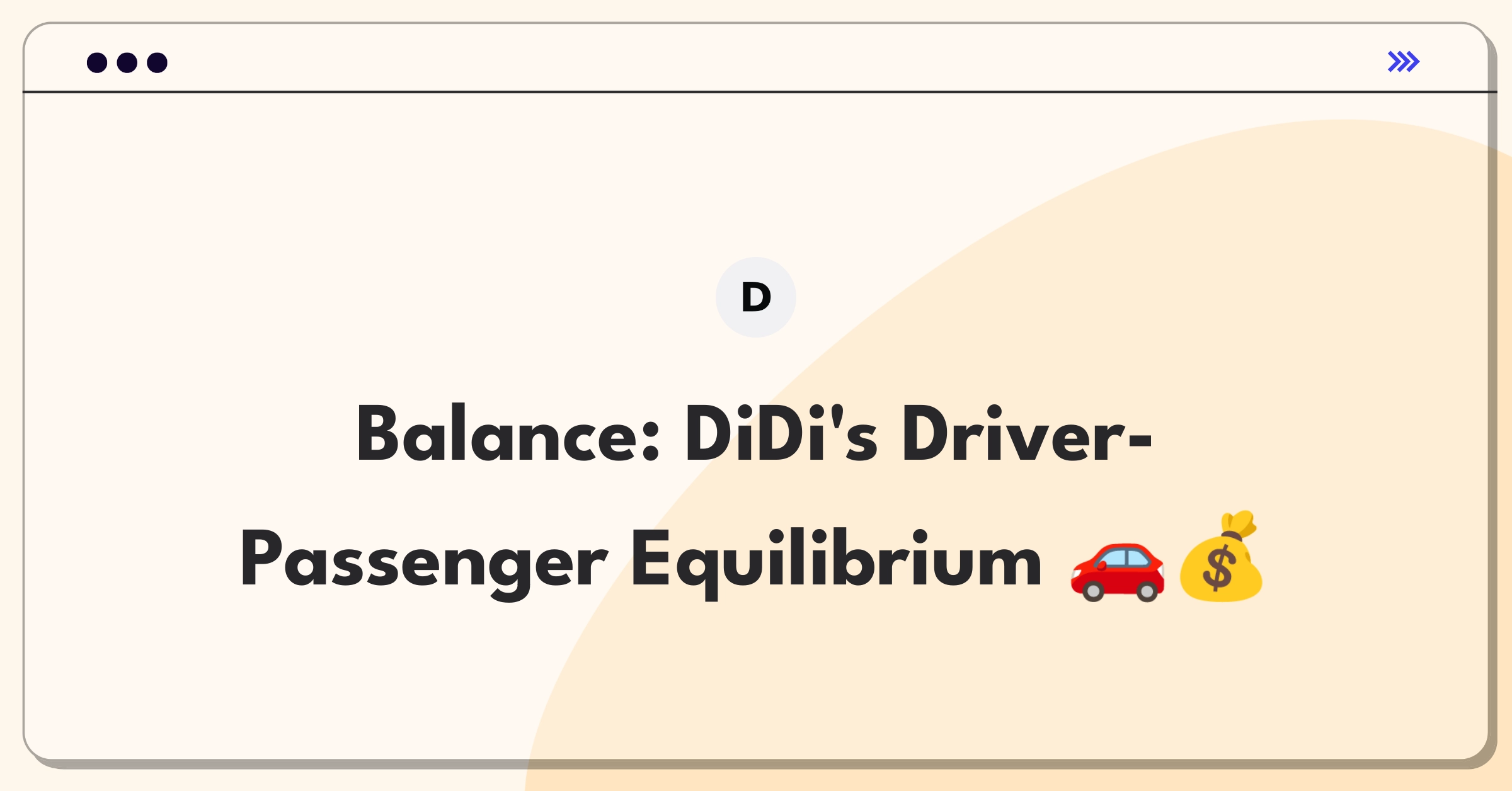Introduction
Balancing driver earnings with affordable ride prices for passengers is a critical trade-off that DiDi must navigate to maintain a sustainable business model. This scenario involves managing the delicate equilibrium between two key stakeholders: drivers and passengers. I'll approach this challenge by analyzing the ecosystem, identifying key metrics, designing experiments, and proposing a decision framework.
Analysis Approach
I'd like to outline my approach to ensure we're aligned on the key areas I'll be covering in my analysis.
Step 1
Clarifying Questions (3 minutes)
Why it matters: Helps understand the urgency and strategic importance of the decision. Expected answer: DiDi is facing increased competition, potentially losing market share. Impact on approach: Would influence how aggressively we need to adjust pricing or driver incentives.
Why it matters: Helps identify potential levers for balancing driver earnings and passenger prices. Expected answer: Take rate is around 20-25%, slightly higher than competitors. Impact on approach: Might consider adjusting our take rate as part of the solution.
Why it matters: Helps tailor pricing strategies to maximize revenue while maintaining affordability. Expected answer: Commuters are more price-sensitive than business travelers or weekend users. Impact on approach: Could lead to dynamic pricing strategies based on user segments and trip types.
Why it matters: Helps understand the impact of earnings on driver supply and platform stability. Expected answer: Churn rate is around 30% annually, with a strong negative correlation to earnings. Impact on approach: Might prioritize maintaining or increasing driver earnings to ensure supply.
Why it matters: Determines the feasibility and timeline of implementing sophisticated pricing strategies. Expected answer: Basic dynamic pricing exists, but more granular control requires development. Impact on approach: Might need to factor in development time and resources for advanced solutions.
Subscribe to access the full answer
Monthly Plan
The perfect plan for PMs who are in the final leg of their interview preparation
$99 /month
- Access to 8,000+ PM Questions
- 10 AI resume reviews credits
- Access to company guides
- Basic email support
- Access to community Q&A
Yearly Plan
The ultimate plan for aspiring PMs, SPMs and those preparing for big-tech
$99 $33 /month
- Everything in monthly plan
- Priority queue for AI resume review
- Monthly/Weekly newsletters
- Access to premium features
- Priority response to requested question


.png)